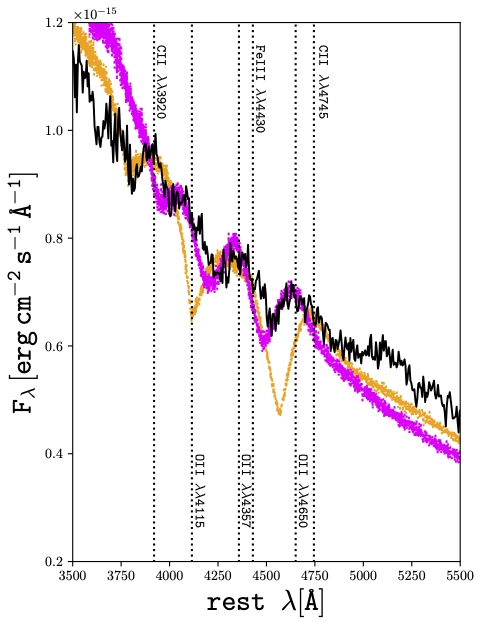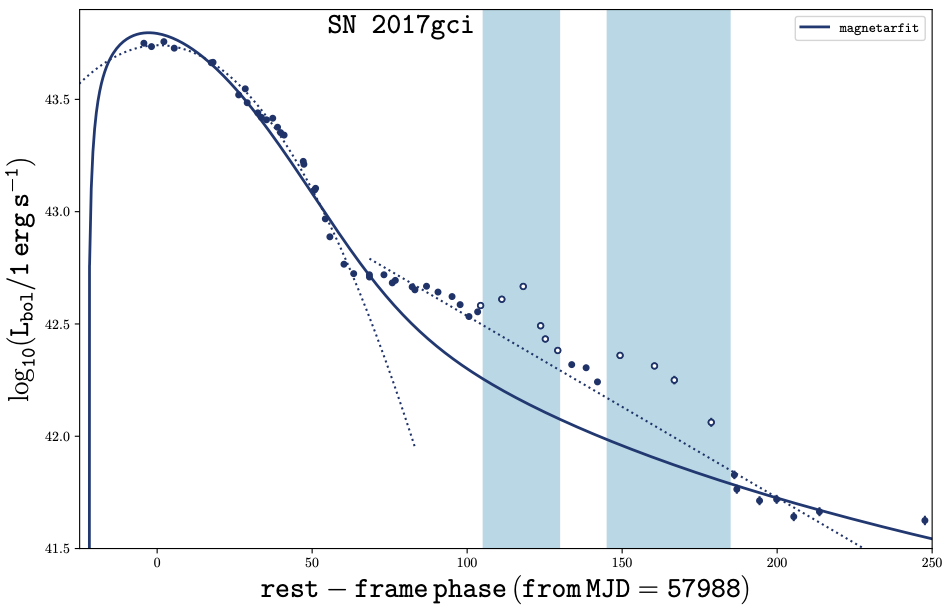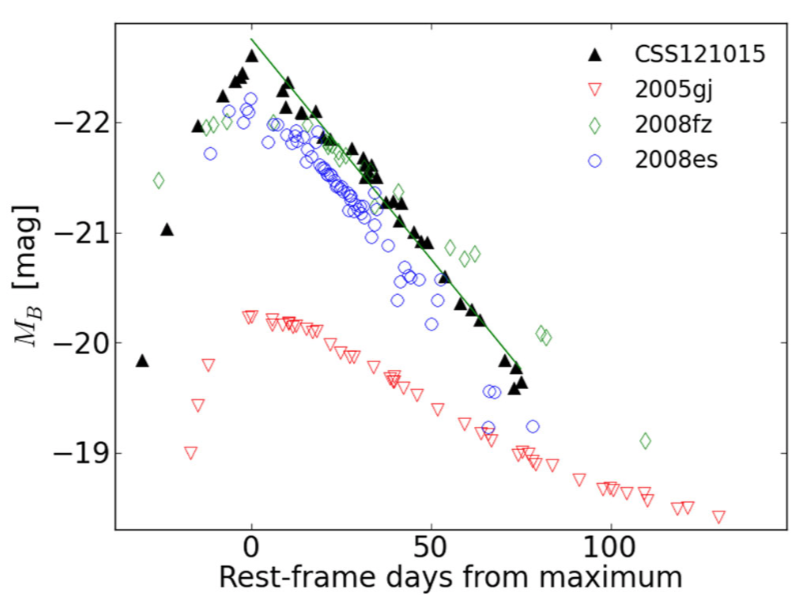 The discovery of rare extremely luminous SNe preferentially located in dwarf, metal-poo∂r host galaxies is challenging the standard paradigm of iron core-collapse. Without any exaggeration, this research field is being revolutionized by the new generation of surveys.
Observational campaigns highlighted a wide range of observed properties among “super-luminous” SNe (SLSNe, Gal-Yam 2012, Science, 337, 927; 2019, ARAA, 57, 305). Although they have extremely luminous light curves (Mmax < -21 at peak), they show different evolutionary timescales and chemical compositions. This suggests that they may originate from different types of massive stars and, possibly, exotic explosion channels. For their high luminosity, they are ideal targets for future high-z searches with JWST, LSST and EUCLID. There are two main subtypes of SLSNe:
The discovery of rare extremely luminous SNe preferentially located in dwarf, metal-poo∂r host galaxies is challenging the standard paradigm of iron core-collapse. Without any exaggeration, this research field is being revolutionized by the new generation of surveys.
Observational campaigns highlighted a wide range of observed properties among “super-luminous” SNe (SLSNe, Gal-Yam 2012, Science, 337, 927; 2019, ARAA, 57, 305). Although they have extremely luminous light curves (Mmax < -21 at peak), they show different evolutionary timescales and chemical compositions. This suggests that they may originate from different types of massive stars and, possibly, exotic explosion channels. For their high luminosity, they are ideal targets for future high-z searches with JWST, LSST and EUCLID. There are two main subtypes of SLSNe:
SLSNe I - Observed in faint hosts (Mg > −17), they are very luminous (Mu ≃ −22) and have early spectra showing a blue continuum and broad, shallow O II lines. At later phases, their spectra experience a transition to SNe Ic broad lined (Pastorello et al. 2010, ApJ, 724, L16; Fiore et al. 2019 submitted; Fiore et al. 2019, 2019a, in preparation, Fig. 1), linking SLSNe I to Wolf-Rayet progenitors. This supports the association of SLSNe-I with Long Gamma-Ray Bursts, as in the case of the super-luminous SN 2011kl (Greiner et al. 2015, Nature, 523, 189). Despite the similarities with type Ic broad-lined SNe, their enormous luminosity at maximum cannot be due to radioactive decay chain of 56Ni, which is the canonical energy source for SNe Ic.

An alternative model envisages that the major power source of SLSNe-I is the spin-down radiation of a rapidly rotating, young magnetar (Kasen & Bildsten 2010, ApJ, 717, 245; Woosley 2010, ApJ, 719, L204, Suzuki & Maeda 2016, 2019, ApJ 880 150). In addition, the shock emission caused by the interaction of the SN ejecta with a Circum-stellar Material (CSM, Chevalier & Fransson 2003, LNP, 598, 171) is a viable power source to account for the SLSNe luminosities, although SLSN spectra do not generally show any clear evidence of CSM interaction. However, such a contribution cannot be completely ruled out to explain SLSNe-I light curves (LCs) since some of them are known to show an oscillating LC both before and/or ~100 days after the maximum luminosity. These ‘bumps’ or ‘re-brightenings’ (see Fig. 2, Fiore et al. 2019, in preparation) are conceivably linked with a late interaction of the SN ejecta with shells or blobs of CSM lost by the progenitor soon before explosion.

The advanced Public ESO Spectroscopic Survey for Transient Objects (ePESSTO/ePESSTO+, PIs C. Inserra, S. Smartt) have been monitoring several SLSNe, and the available sample size is increasing (metterei la review di SN Handbook come referenza). Sample studies are starting to shed light on the statistical correlations among the observational properties of SLSNe-I (Inserra et al. 2013, ApJ, 370, 128; Yan et al. 2017, ApJ, 848, 6; De Cia et al. 2018, ApJ, 860, 00; Inserra et al. 2019, NatAs, , 6971; Lunnan et al. 2019, astro-ph/1910.02968). This will help to a better interpretation of the growing plethora of SLSN-I data.
SLSNe II - Also hydrogen-rich SLSNe II are observed in faint hosts. Their absolute magnitude at peak and their photometric evolution resemble those of SLSNe I. However, the spectra show shallow Balmer lines, suggesting that their progenitors retained a residual hydrogen envelope. A SLSN II extensively monitored extensively by PESSTO, CSS121015:004244+132827 (Benetti et al. 2014, MNRAS 441, 289; see Fig. 3), is one of the most luminous SN ever. The detection of weak, narrow H emission lines indicates the presence of hydrogen-rich CSM. Although similar powering mechanisms may be invoked for both SLSNe I and SLSNe II, ejecta-CSM interaction gives a viable alternative explanation for the observed properties of SLSNe II.
People directly involved in this project are:
Achille Fiore (INAF-OAPd), Stefano Benetti (INAF-OAPd), Riccardo Ciolfi (INAF-OApd), Andrea Pastorello (INAF-OAPd), Enrico Cappellaro (INAF-OAPd), Nancy Elias-Rosa (INAF-OAPd), Massimo Turatto (INAF-OAPd), Lina Tomasella (INAF-OAPd)
Other collaborators:
Inserra Cosimo (Cardiff University), Ting-Wan Chen (MPE Garching), Antonia Morales Garoffolo (Universitad de Cadiz)